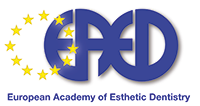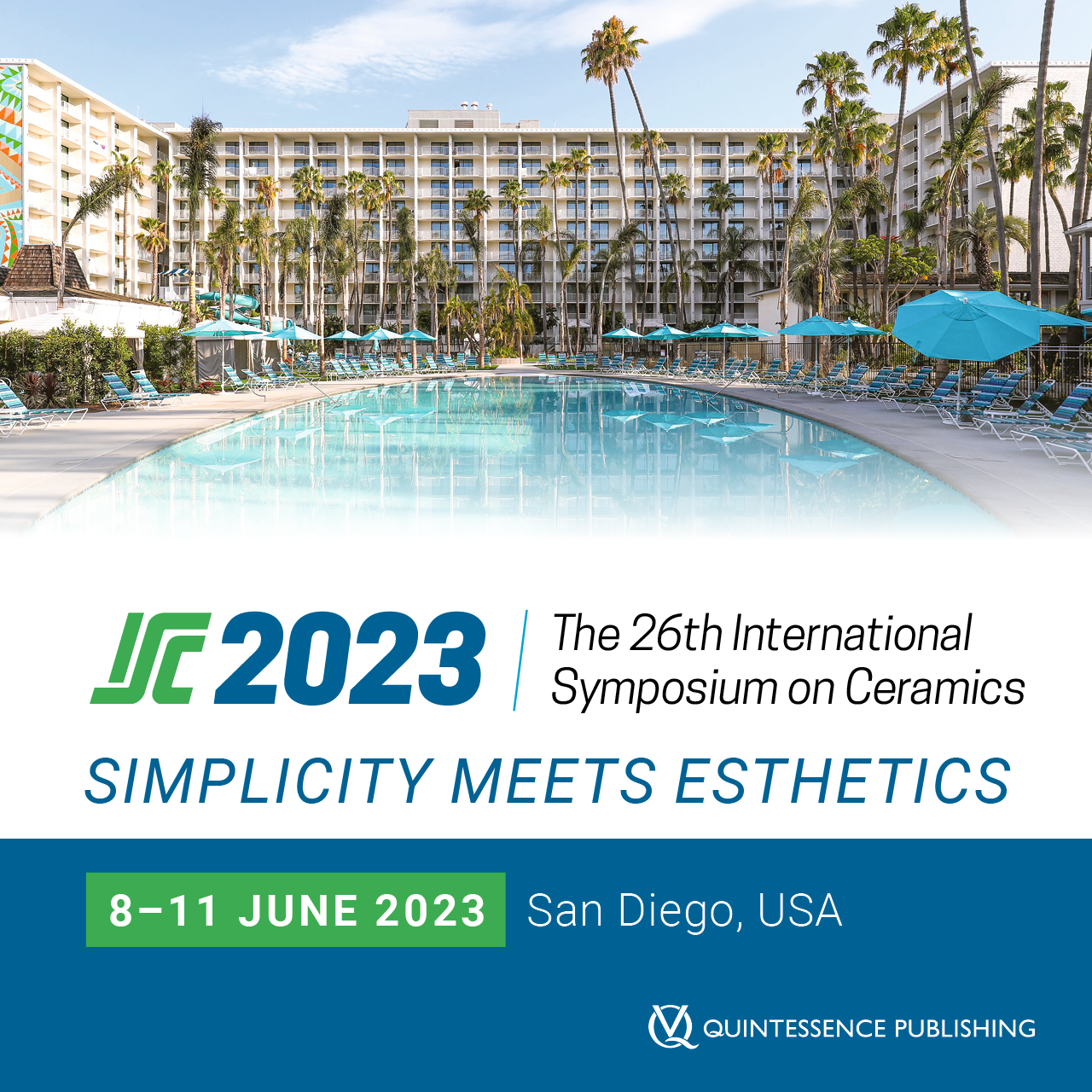The International Journal of Oral & Maxillofacial Implants, Pre-Print
DOI: 10.11607/jomi.11302, PubMed-ID: 4008004913. März 2025,Seiten: 1-12, Sprache: EnglischZusin, Alex / Estrin, Nathan E. / Zhang, Yun / Romanos, Georgios E.Purpose: Short dental implants are usually placed to avoid vertical augmentations. However, surgical experience appears to be fundamental, especially in compromised bone qualities. This study aimed to evaluate the importance of clinical expertise on implant stability (IS) of 6mm implants placed in vitro. Materials and Methods: 480 implants (BioHorizons®-Tapered, 6mm with diameters 4.6mm and 5.8mm) were utilized. All implants were placed by three clinicians with different surgical experience levels. One master clinician (A); one third-year resident with experience near 100 implants (B); and one resident without implant surgical experience (C). Each surgeon prepared 40 osteotomies for each implant diameter in type I bone and 40 osteotomies in type IV-bone quality (Sawbones®), respectively. In each group, 20 implants were placed at crestal bone level, the other 20 implants 1mm supracrestal. The IS was evaluated using an Osstell®-device. Comparison of IS between the A, B, and C for all implant groups was performed using ANOVA and Bonferroni correction for multiple comparisons for significance level as p<0.05. Results: Implants placed supracrestally showed differences between the experienced clinicians vs. the inexperienced, but not between the master clinician and 3rd-year resident. A similar trend can be observed with implants placed at crestal levels. In type I-bone, greater stability was achieved for the experienced clinicians when compared to the inexperienced (p<0.0001); however, in type IV bone, the comparison of stability showed p <0.0001 for all groups, with greater IS values for master clinician over both residents. Conclusions: Overall, both master and moderate experienced surgeons presented increased stability on 6mm implants compared to the inexperienced resident.
Schlagwörter: implant stability, short implants, subcrestal implant placement
International Journal of Periodontics & Restorative Dentistry, Pre-Print
DOI: 10.11607/prd.7567, PubMed-ID: 400534977. März 2025,Seiten: 1-20, Sprache: EnglischEstrin, Nathan / Farshidfar, Nima / Ahmad, Paras / Froum, Scott / Castro Pinto, Marco Antonio / Zhang, Yufeng / Miron, Richard J.Exosomes, the smallest subset of extracellular vesicles, play a crucial role in cell signaling and communication throughout the body. Their regenerative potential has sparked tremendous interest, with over 5,000 articles on exosomes being published yearly, primarily focused on invitro and pre-clinical studies. However, to date, no study has investigated their use in humans for dental applications. In this first case report, horizontal ridge augmentation was performed utilizing a novel combination of bone allografts, platelet-rich fibrin (PRF), and a specialized subset of exosomes (Periosomes). Implants were placed at 3 months post-surgery, during which a core biopsy was taken for histological analysis. Additionally, cone-beam computed tomography (CBCT) scans were obtained at 1, 2, 3, and 6 months, revealing marked and progressive bone growth. To our knowledge, this study represents the first documented use of exosomes in human alveolar bone regeneration. This case highlights the promising potential of exosomes in regenerative dentistry, opening new avenues for their application in guided bone regeneration procedures.
Schlagwörter: Alveolar ridge augmentation, Guided tissue regeneration, Leukocyte and Plateletrich fibrin, Exosomes, extracellular vesicles, bone morphogenetic protein
International Journal of Periodontics & Restorative Dentistry, Pre-Print
DOI: 10.11607/prd.7395, PubMed-ID: 3980853714. Jan. 2025,Seiten: 1-22, Sprache: EnglischTian, Jiehua / Jiang, Xi / Zhang, Yu / Di, Ping / Testori, Tiziano / Lin, YeSinus membrane perforations are among the most commonly reported intraoperative complications encountered during maxillary sinus floor elevation procedures performed via the lateral window approach. Large perforations (> 10 mm) can pose a major clinical challenge, and often result in failed bone augmentation and poorer long-term implant survival. Owing to these challenges, even a highly skilled oral implant surgeon with advanced training in implantology faced with such perforations may abandon grafting procedures in favor of a reentry approach. This article describes a novel approach to managing large perforations through the use of a collagen membrane stabilized by tacks on the medial and lateral walls that is permissive to simultaneous bone augmentation.
Schlagwörter: sinus floor elevation; dental implants; sinus membrane perforation; collagen membrane; case report
Chinese Journal of Dental Research, 1/2025
DOI: 10.3290/j.cjdr.b6097621, PubMed-ID: 40162656Seiten: 55-62, Sprache: EnglischYang, Jing Yi / Zhang, Yi Xin / Zhang, Yu Wei / Chen, Ying / Xu, Min Di / Wang, Dan Dan / Chen, Yi Hua / Wang, Yi Xiang / Xia, BinObjective: To investigate the role of the biosynthetic gene cluster BGC3 of Streptococcus mutans (S. mutans) in the process of dental caries. Methods: BGC3 and ∆BGC3 S. mutans strains were constructed and their growth curves were evaluated. Acid production capacity was assessed by evaluating pH reduction levels over identical culture periods. The survival of bacteria in phosphate citrate buffer solution (pH 3.0) was quantified. The expression levels of virulence genes (atpF, gtfC, gtfD, spaP, vicR and ftf) were analysed using the qPCR. Co-culture experiments were conducted to evaluate bacterial adaptability. Bacterial viability was determined by microscopical examination of live/dead staining. Results: Deletion of BGC3 did not significantly impact S. mutans growth or acid production in biofilms. The ∆BGC3 strain exhibited enhanced acid resistance and higher expression levels of virulence genes compared to the wild type. In addition, ∆BGC3 exhibited superior bacterial viability in the co-culture system. Conclusion: BGC3 affected the acid resistance and expression of caries-related genes in S. mutans. The BGC3 knockout strain exhibited a more robust survival capability than the wild-type strain.
Schlagwörter: biofilm, biosynthetic gene clusters, dental caries, Streptococcus mutans, virulence genes
Quintessence International, 7/2024
DOI: 10.3290/j.qi.b5342511, PubMed-ID: 38757949Seiten: 580-588, Sprache: EnglischZhang, Qinglai / Zhang, Yue / Lin, Lili / Meng, Fei / Jia, MengObjective: To determine the oral health status of patients on maintenance hemodialysis and to identify the factors influencing their oral health. Method and materials: This observational study included 1,186 patients with chronic kidney disease who received maintenance hemodialysis across 33 hospitals in China. The patients were recruited for a questionnaire survey between April and August 2023 at Beijing Chaoyang Hospital using stratified sampling. Data collection tools included the General Information Questionnaire for Maintenance Hemodialysis Patients, the Oral Health Assessment Tool, the Pittsburgh Sleep Quality Index, and the Hospital Anxiety and Depression Scale. Spearman rank correlation coefficients were used to assess the relationships between the oral health of patients on maintenance hemodialysis and continuous variables such as sleep quality and emotional status. Multiple linear regression analysis was employed to explore the relationship between oral health and various variables. Results: The oral health scores of the patients ranged from 8 to 22, with a mean score of 12.54 ± 2.63. The final model of the multiple linear regression analysis indicated a goodness of fit of 22.19%. Independent factors affecting the oral health of patients included smoking, the proportion of medical expenses, water consumption, sleep quality, and anxiety scores (all P .05). High levels of smoking, substantial medical expenses, poor sleep quality, and elevated anxiety scores were risk factors for poor oral health (all P .05). Adequate daily water intake served as a protective factor for oral health (P .05). Conclusion: This study proposes targeted interventions to enhance the management and improvement of oral health in patients on hemodialysis, aiming to provide highly personalized and effective oral health care. These interventions are expected to improve oral health outcomes in future clinical practice.
Schlagwörter: influencing factors, maintenance hemodialysis, nursing care, oral health
Oral Health and Preventive Dentistry, 1/2023
Open Access Online OnlyNarrative ReviewDOI: 10.3290/j.ohpd.b3818045, PubMed-ID: 3665131118. Jan. 2023,Seiten: 7-15, Sprache: EnglischFu, Yuwen / Xu, Xin / Zhang, Yu / Yue, Peng / Fan, Yuxin / Liu, Meixiao / Chen, Jingjing / Liu, Aihua / Zhang, Xiufeng / Bao, FukaiSummary: Periodontal disease (PD) and Alzheimer’s disease (AD) are inflammatory diseases affecting the adult population of the world. PD is mainly caused by infection with Porphyromonas gingivalis (P. gingivalis) and by the synergistic action of various microorganisms. These microorganisms penetrate into the subgingival tissue and cause bacteremia, leading to disruption of the homeostasis of the internal environment of the body. Virulence factors known as gingipains, which are cysteine proteases and other toxins, including fimbria and lipopolysaccharides (LPS), are strongly associated with periodontitis and other systemic inflammation. PD has a known polymicrobial aetiology, and patients who eventually develop sporadic AD tend to have recurrent infections before a clinical diagnosis of dementia. AD, the most common neurodegenerative disease, is characterised by poor memory and specific hallmark proteins. An increasing number of studies have shown that periodontal pathogens are increasingly associated with this form of dementia. Many articles have shown that P. gingivalis infections directly increase the risk of PD and may indirectly lead to the development of AD. However, these links and probable pathogenesis remain to be explored. The aim of this review was to explore whether P. gingivalis periodontal infection is associated with AD and to provide possible mechanisms of association.
Schlagwörter: Alzheimer’s disease, neurodegenerative disease, periodontal disease, Porphyromonas gingivalis (P. gingivalis)
Oral Health and Preventive Dentistry, 1/2023
Open Access Online OnlySystematic ReviewDOI: 10.3290/j.ohpd.b3904343, PubMed-ID: 3679477716. Feb. 2023,Seiten: 49-60, Sprache: EnglischZhang, Yuhan / Ren, Xiaolin / Hu, Tao / Cheng, Ran / Bhowmick, Neil A.Purpose: Periodontal disease is potentially related to certain kinds of cancer. This review aimed to summarize the relationship between periodontal disease and breast cancer, providing some strategies for the clinical treatment and periodontal health care of breast cancer patients.
Materials and Methods: Systematic reviews, randomised controlled trials, prospective and retrospective clinical studies, case series and reports were collected using search terms entered into the PubMed, Google Scholar and JSTOR databases.
Results: Research has provided some evidence that periodontal disease is related to the occurrence and development of breast cancer. Periodontal disease and breast cancer have some common pathogenic factors. Periodontal disease may affect the initiation and development of breast cancer involving microorganisms and inflammation. Periodontal health is affected by radiotherapy, chemotherapy, and endocrine therapy for breast cancer.
Conclusions: Periodontal therapy for breast cancer patients should be performed differently according to the stage of cancer treatment. Adjuvant endocrine treatment (e.g. bisphosphonates) has a great impact on oral treatment. Periodontal therapy contributes to the primary prevention of breast cancer. Periodontal health care of breast cancer patients is worthy of clinician attention.
Schlagwörter: breast cancer, clinical treatment, periodontal disease, periodontal health care
International Journal of Periodontics & Restorative Dentistry, 5/2022
DOI: 10.11607/prd.5706Seiten: 649-656, Sprache: EnglischFu, Xiaojiao / Tian, Jiehua / Wang, Ying / Zhang, Yu / Lin, YeThe aim of this retrospective study was to evaluate the effect of free gingival grafts (FGGs) at adjacent mandibular molar implants and to compare the clinical outcomes between the first molar (M1) and second molar (M2) sites. Twenty-one patients with 44 implants were included. At the 3-year follow-up, the mean increase in the keratinized mucosa width (KMW) was 2.35 ± 1.33 mm, and the mean KMW shrinkage rate was 58% ± 23%. M1 sites showed a significantly greater increase of KMW and less graft shrinkage than M2 sites (M1: 2.87 ± 1.40 mm and 49% ± 24%, M2: 1.83 ± 1.06 mm and 66% ± 19%, P < .05). The results show that using FGG to increase KMW in mandibular molar implants was a predictable treatment method, and M1 sites were associated with a greater KMW increase than M2 sites.
The International Journal of Prosthodontics, 4/2022
DOI: 10.11607/ijp.2022.4.eSeiten: 378-379, Sprache: EnglischZhang, YuA New Era in All-Ceramic RestorationsThe International Journal of Prosthodontics, 4/2022
DOI: 10.11607/ijp.7551Seiten: 469-479, Sprache: EnglischSato, Tabata Prado / Arata, Anelyse / de Miranda, Larissa Mendonça / Bottino, Marco Antonio / de Melo, Renata Marques / Zhang, Yu / Souza, Rodrigo Othávio AssunçãoPurpose: To evaluate the biaxial flexural strength of different porcelain-to-zirconia thickness ratios and bonding strategies of a stress-free bilayer CAD/CAM ceramic system.
Materials and methods: A total of 60 zirconia discs (diameter: 15 mm; thickness: 0.3 or 0.5 mm; n = 30 for each thickness) were divided into six groups (n = 10 each) according to porcelain-to-zirconia ratio and bonding strategy: VM/Zr (control): zirconia discs veneered with a feldspathic ceramic (VM 9, Vita) in 0.9-mm and 0.7-mm thicknesses using a conventional hand-layering technique; VB/Zr-SBU: zirconia discs airborne particle-abraded with 50-μm Al2O3 particles followed by an MDP primer application (Single Bond Universal, 3M) and bonded to the porcelain with a resin cement (Panavia F 2.0, Kuraray); and VB/Zr-RC: zirconia discs airborne particle-abraded with 30-μm silica-coated Al2O3 particles and silanized and bonded to the porcelain with the same resin cement. Before cementation, the VB (Vitablocs II) discs were etched with 5% hydrofluoric acid (60 seconds), followed by silane application. The bilayers (thickness = 1.2 mm) were loaded with 750 g while light curing the resin cement. Two porcelain-to-zirconia thickness ratios were evaluated: 0.9: 0.3 mm and 0.7: 0.5 mm. All groups were subjected to 106 mechanical cycles, followed by a biaxial flexural test. Data (MPa) were subjected to two-way analysis of variance (ANOVA), Tukey test (5%), and Weibull analyses.
Results: Two-way ANOVA revealed that the factor porcelain-to-zirconia ratio (P = .0556) was not significant; however, the bonding strategy factor was statistically significant. Among the 0.5-mm zirconia groups, the VB/Zr-SBU group presented higher flexural strength (s) than the VM/Zr or VB/Zr-RC groups. Similar results were also found for the 0.3-mm zirconia groups, in which the VB/Zr-SBU group also presented higher strength than the others, which were similar in comparison (Tukey). The Weibull modulus was similar among the groups; however, the characteristic strength was significantly different (P = .000).
Conclusion: The zirconia bonding strategy with 50-μm Al2O3 airborne-particle abrasion, followed by a primer application, increases the flexural strength of a stress-free bilayer CAD/CAM ceramic system.







